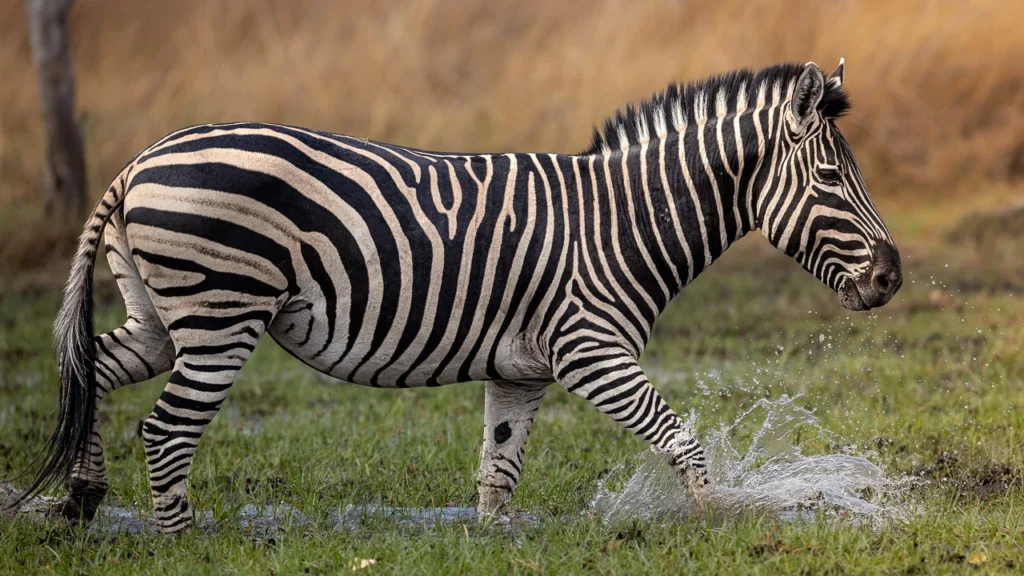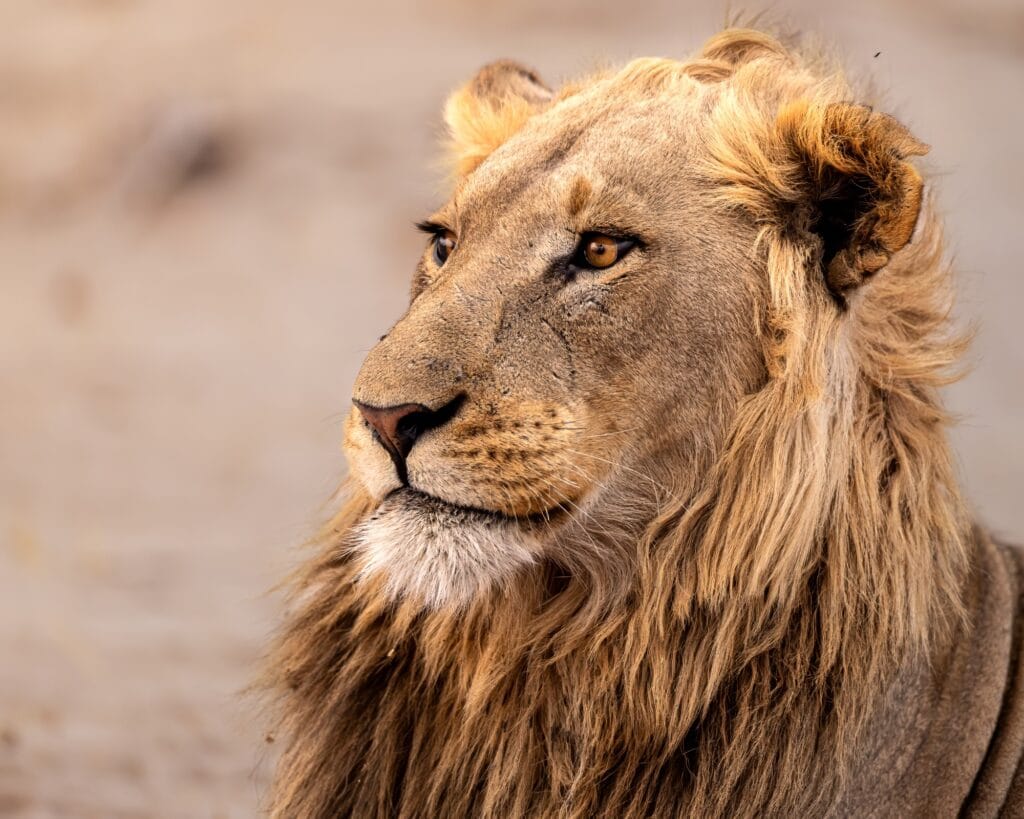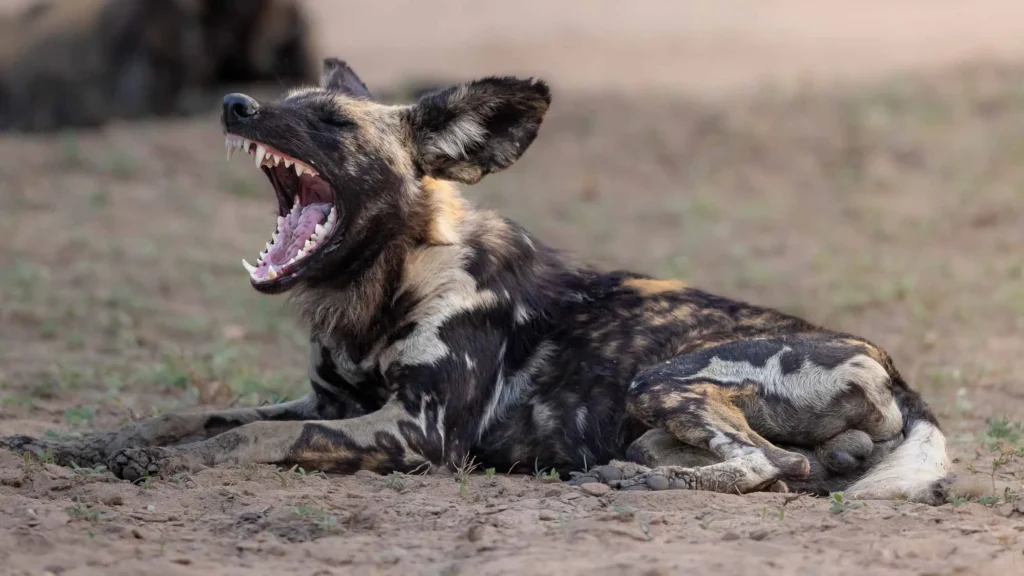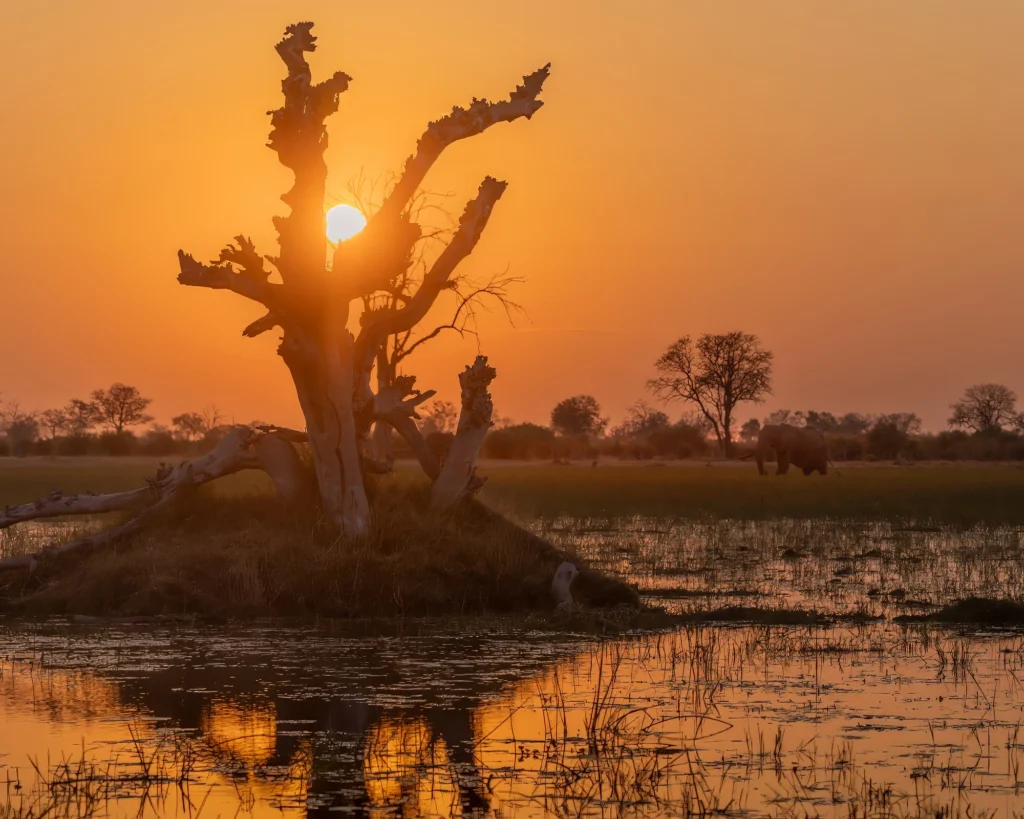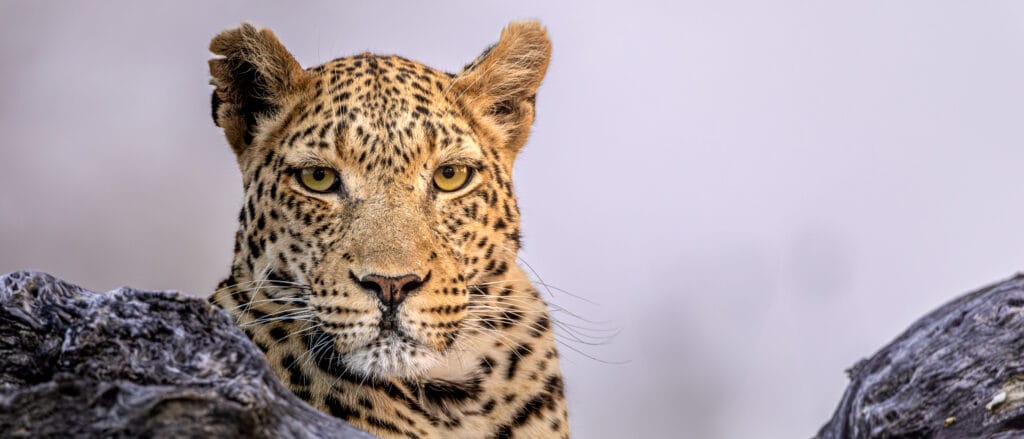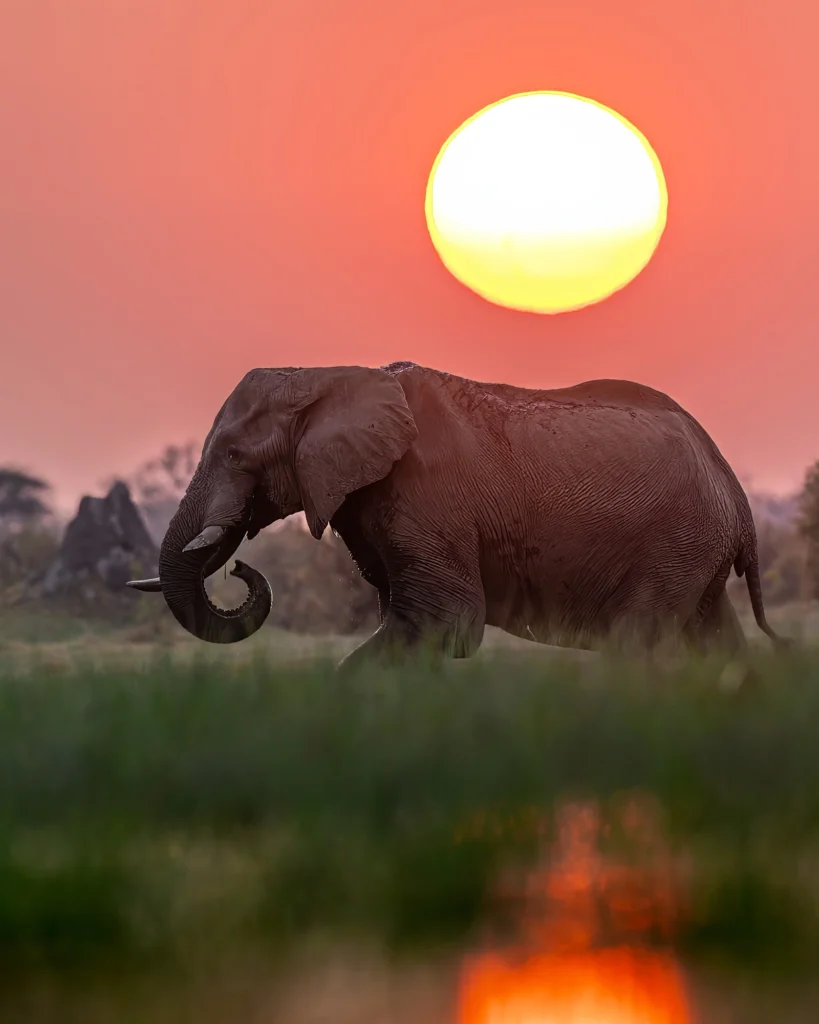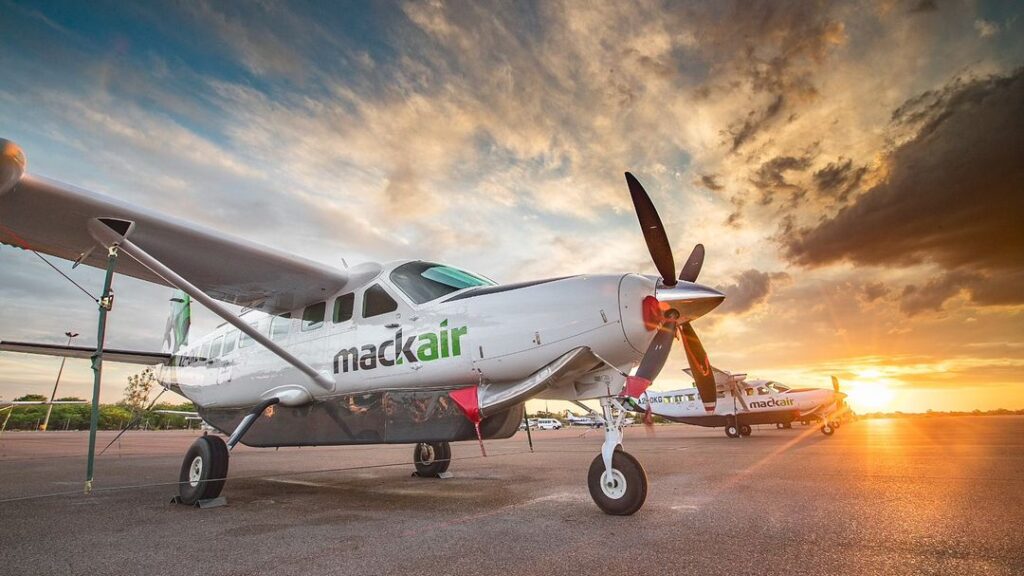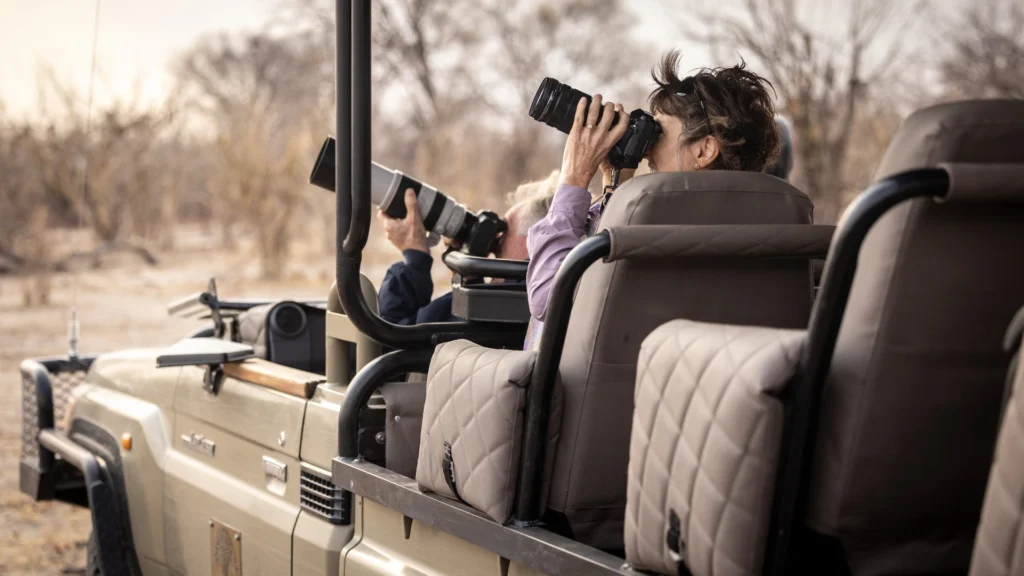A wildlife Photographer's Guide
Botswana. A country of contrasts that devotes 40% of its resources to wildlife management, and boasts one of Africa’s highest GDPs. Eco-tourism is responsible for a large percentage and, for good reason. With over 70 safari lodges to choose from in the different regions, from mobile camps to high-end luxury offerings, we’ve designed an informative photographer’s guide to Botswana to help you make informed decisions about where to go and what animals to photograph.
The terrain stretches from the dry Kalahari to the wetlands of the Okavango Delta, to the Chobe River with a vast amount of biodiversity, making it a bucket list trip for many photographers.
Photographer’s have visions of capturing stunning landscapes, a pride of lions stalking prey, a leopard securing a recent kill up a tree, hippos eyeing ducks along muddy river banks.
All of these images will be taken during the golden hours of sunrise and sunset making the experience a perfect Instagram moment in time.
Then reality sets in. It’s been hours since the last wildlife sighting. Sunset is a bust with a thck layer of clouds blocking golden rays. The lighting at mid-day is harsh direct sunlight, not the best for photography. Animals flee at the slightest movement, and when you do manage to get them in focus, your view is obscured by thick brush.
This blog post will give you tips, techniques and insider knowledge to get the most out of your Botswana Photography Safari.
I’ll reveal the best areas to photograph wildlife in Botswana, that will help you elevate your wildlife photography to the next level. You’ll learn the secrets of capturing fantastic images of African Elephant, Lion, Leopard, Hippo, Water Buffalo, Gemsbok, Nyala, Antelope Wildebeest, Pangolin, Baboon, Crocodile, Cheetah, and dozens of bird species.
In each location, African wildlife engage in various behaviors, including courtship, breeding, in-flight behavior, and other animal gestures. You’ll learn to anticipate the moments that reward you with wildlife photography worthy of sharing.
When planning a photography safari, you have the option of independent travel, travel with organized group, or alternatively, join a wildlife photography workshop to learn from expert instructors and collaborate with other photographers, greatly improving your skills and chances of getting amazing images.
What is the best time of year to visit Botswana?
For a photography safari in Botswana, the dry winter months, specifically from May to October, are generally considered the optimal time. During this period, wildlife congregates around diminishing water sources, leading to heightened animal activity and easier sightings. The sparse vegetation also enhances visibility, allowing for clearer and more dramatic photographs. Furthermore, the clear, sunny days and cooler temperatures provide comfortable conditions for long hours spent in safari vehicles.
While the dry season is prime, the green season, think afternoon thunderstorms, can also provide amazing photographic opportunities, with lush landscapes, migratory birds and dramatic wide shots of animals against dramatic cloud formations.
Where are the best areas for wildlife photography in Botswana?
There are four main areas that we will cover: Kalahari, Okavango Delta Moremi Game Reserve and Chobe National Park. Each area has its own unique characteristics and mix of African wildlife. I recommend researching the must see animals on your list to photograph and design a trip that includes at least two regions to get the full Botswana photography experience.
The Kalahari region
The Kalahari region of Botswana, a vast semi-arid sandy savannah, offers a unique and captivating photographic experience.
Characterized by its expansive landscapes, dramatic skies, and sparse vegetation, the Kalahari provides a stunning backdrop for wildlife photography.
Animals such as the iconic black-maned Kalahari lions, adaptable gemsbok with their striking horns, meerkats, brown hyenas, and cheetahs thrive in this challenging environment.
The clear, dry air and wide-open spaces allow for exceptional visibility, enabling photographers to capture dramatic action shots and breathtaking panoramic images.
The stark beauty of the desert, combined with the concentration of wildlife around waterholes, particularly during the dry season, creates unforgettable photographic opportunities, making the Kalahari a sought-after destination for wildlife photographers seeking a unique African wildlife photography experience.
The Okavango Delta
The Okavango Delta, a unique inland delta in Botswana, offers an unparalleled photographic experience with its diverse ecosystems and abundant wildlife.
This lush, water land attracts many of the animals on your list to photograph, including elephants, hippos, crocodiles, lions, leopards, wild dogs, and a vast array of birdlife.
The delta’s intricate network of waterways, floodplains, and islands provides a variety of stunning backdrops, from reflections in still lagoons to dramatic silhouettes against vibrant sunsets.
One unique aspect of the Okavango Delta is the ability to explore the delta by mokoro, the traditional canoe that for centuries was and still is, the mode of transportation for local residents. This clever designed boat allows photographers to capture intimate and unique perspectives of wildlife from lower angles along the waterways.
While the high concentration of animals ensures frequent sightings and exceptional photographic opportunities, the combination of diverse habitats, abundant wildlife, and unique modes of exploration makes the Okavango Delta a dream destination for wildlife photographers seeking to create truly breathtaking images.
Moremi Game Reserve
Moremi Game Reserve, located within the Okavango Delta, offers a diverse range of habitats, from floodplains and lagoons to forests and grasslands, creating exceptional photographic opportunities.
This reserve is renowned for its high concentration of wildlife, including the “Big Five” (lions, leopards, elephants, buffalo, and rhinoceros), as well as wild dogs, and cheetahs. Unlike the Okavango Delta, which heavily emphasizes water-based activities like mokoro excursions, Moremi allows for a more traditional 4×4 safari experience, enabling photographers to capture dramatic wildlife encounters on land. While the Okavango Delta provides unique water-level perspectives, Moremi’s varied terrain and dense wildlife populations offer more opportunities for classic wildlife action shots and intimate portraits, making it a highly sought-after destination for photographers seeking striking and dynamic images.
Khwai River Community Reserves
One should also consider the area adjacent to the Moremi Game reserve, where a large network of private community-based reserves that offer exclusive and often more intimate wildlife experiences. These reserves, often managed in partnership with local communities, prioritize sustainable tourism and conservation, contributing directly to the livelihoods of the people who live alongside the wildlife. Areas like the Khwai Community Concession, bordering Moremi, or the Linyanti region, north of the Okavango, provide excellent photographic opportunities.
These areas tend to offer a more exclusive experience, with fewer vehicles and greater flexibility for photographers. The diverse landscapes, ranging from riverine woodlands to floodplains, support a rich variety of wildlife, including large elephant herds, predators like lions, leopards, and wild dogs, and a wide array of birds. Night drives and walking safaris, often permitted in these private concessions, allow for unique photographic opportunities that are restricted in national parks.
The emphasis on responsible tourism and the close connection to local communities adds a meaningful dimension to the photographic experience, making these reserves a compelling alternative to the more crowded areas.
Chobe National Park
Chobe National Park, renowned for its massive elephant populations, offers exceptional photographic opportunities across its diverse landscapes.
I recommend the park’s distinct regions, including the lush riverfront in Kasane, the arid Savuti Marsh, and the remote Nogatsaa Pans, each provide unique wildlife encounters.
Kasane has many lodges on the riverfront. A cruise along the river will get you to areas teeming with elephants, hippos, and crocodiles. You’ll get stunning water-level shots while covering a large area by boat. Most outfitters have specialized boats outfitted with camera mounts designed for photographers.
Savuti’s dramatic landscapes and predator-prey interactions offer thrilling action photography, especially during the dry season when wildlife congregates around dwindling water sources.
The Nogatsaa Pans, with its seasonal waterholes, attracts large herds of zebras and wildebeest, creating captivating migration scenes. Chobe’s high concentration of wildlife, including lions, leopards, wild dogs, and a vast array of birdlife, coupled with its varied terrain, makes it a photographer’s paradise.
The dramatic light and open landscapes, particularly in Savuti and Nogatsaa, allow for striking compositions and unforgettable wildlife images.
Camera Equipment for an African Safari
Here’s what’t in my bag for an African Safari. This applies to all the main safari destinations in Botswana, South Africa, Namibia,Zambia, Kenya, Zimbabwe, Uganda.
I am a Canon R5 Mark ll mirrorless shooter, but the list below works for the camera brand you prefer.
Camera Bodies: I recommend taking two camera bodies. Nothing is more disheartening than losing a camera to damage or malfunction during an expensive bucket list safari. It happens more often than you think. A DSLR or newer mirrorless camera with good auto-focus characteristics is the key to getting sharp images.
Lenses: A take a combination of lenses, favoring longer focal lengths. A 70mm-200 medium zoom and a 100-500mm longer zoom are ideal. If you can afford a 600mm prime lens, even better. Pair any of these lenses with a 1.5X or 2X teleconverter for even more reach. For landscapes, or shot of wildlife that approach your safari vehicle, a 24mm-35mm prime lens or short zoom is helpful.
To be honest, most of your shooting will be with the medium 70-200mm zoom on one camera body and your longest lens on the second camera body. Wildlife is typically skittish and maintains a good distance form your safari vehicle. The exception is lions, which you can get surprisingly close under the right conditions.
Batteries:
I limit batteries to two per camera body and one charger. This combination limits weight and considering you’ll be back in cam around mid-morning for hours before the afternoon game drive, you’ll have plenty of time to recharge batteries during the break.
CF/SD Cards & Storage:
Bring enough CF/SD cards to cover your entire trip. This becomes your primary backup. Two 2Tb SD drives are my choice to create two additional backup copies of everything you shoot. Keep at least one drive in a separate location. If someone grabs you camera bag with all your cameras and drives you’ll end up with an insurance claim and no images to show for it.
Cleaning Supplies:
A rocket style blower is ideal for keeping dust off your lenses and cameras. Safari vehicles kick up a ton of dust. It’s best to keep cameras and lenses covered when you are on the move. Include a dozen pre-moistened wipes and a soft cloth. If you you are worried about dust on you sensor, bring a sensor cleaning kit and know how to use it before you travel.
Tripod: If you can spare the weight, a light tripod or mono-pod can be useful if you rig it upside down and hang it out of the safari vehicle to get animals that approach too close for a longer lens. Otherwise, there isn’t much call for a tripod unless you plan on doing astro or time-lapse photography.
Everything else: Soft luggage is required on bush flights. I split my cameras between soft luggage and a camera backpack.
Safari clothing is typically neutral tan colors. Do not wear bright blues or reds. You’ll want to blend in with your surroundings to become invisible to wildlife. I prefer long sleeves and long pants. The weather is usually hot, but surprisingly cool during the first hour of the morning drive. Bring a lightweight fleece for the cooler temperatures.
If your worried about insects, you may consider spraying your clothes with a repellent before travel. It lasts a half dozen washes and is easy to apply.
Medical Considerations: Do check with your doctor for any recommended vaccinations and medications you may want during your trip. It’s important to note that some African countries require a proof of Yellow Fever vaccination for entry.
In addition, check the visa requirements for the country you will be visiting.
Travel Insurance: For expensive trips to remote parts of Africa, I strongly recommend travel insurance. Insurance will typically cover and refund costs for trip cancellations, medical evacuations, and some cases, your camera equipment.
Bush Flights in Botswana
Most flights to lodges in Botswana originate in Maun. AirLink offers connections to Maun from international airlines that fly to Johannesburg and Cape Town.
For internal bush flights the most dominant airline is Mack Air. They operate a fleet of Cessna Caravans to all the popular destinations.
All bush flights have strict weight limitations on luggage. mack Air weight for all luggage is 20Kg or about 40Lbs. Check the latest limitations before you travel.
Photography Tour or Go it Alone?
If you take your photography seriously, I recommend signing on with a safari tour or workshop designed for photographers. You’ll get expert instruction, a dedicated seat on a safari vehicle and the added benfiot of working with like-minded peers with the same goal to take outstanding wildlife shots.
If you go it alone, you’ll end up with non-photographers that won’t have the patience to wait for you to get the shot.
I run multiple African Safari Photography Tours annually. I’m happy to offer advice, answer any questions, and steer you in the right direction. You can reach me at [email protected]
